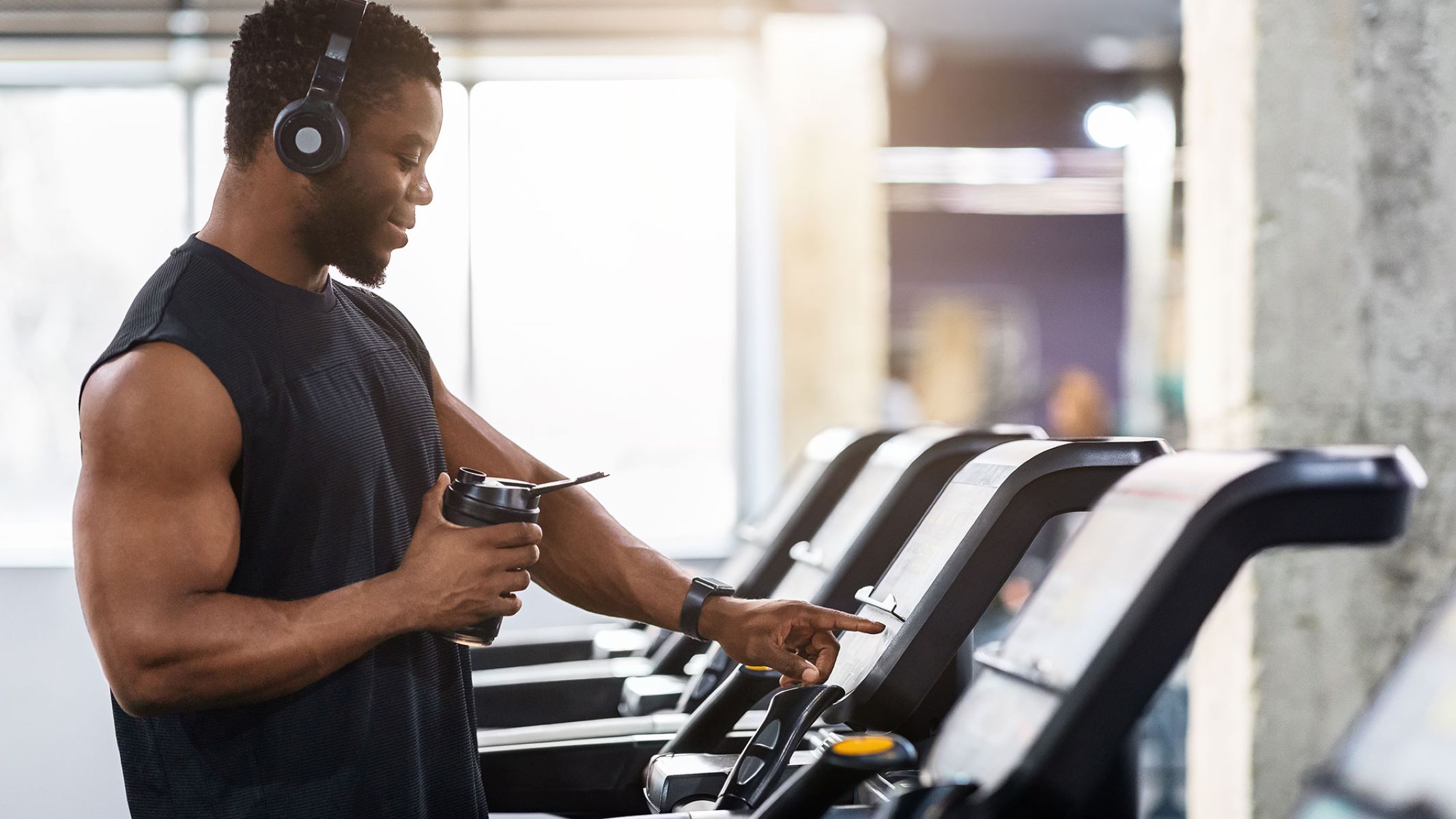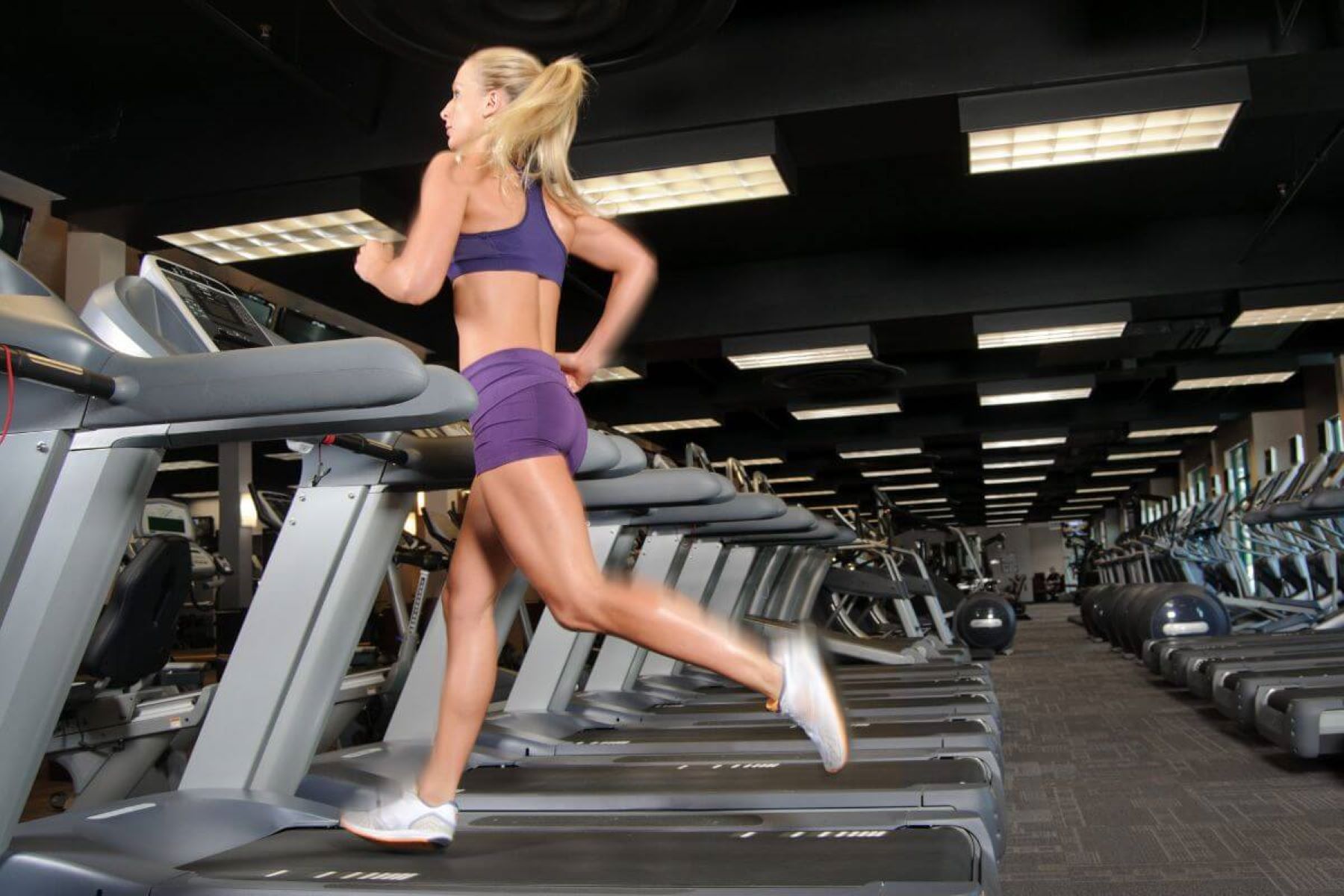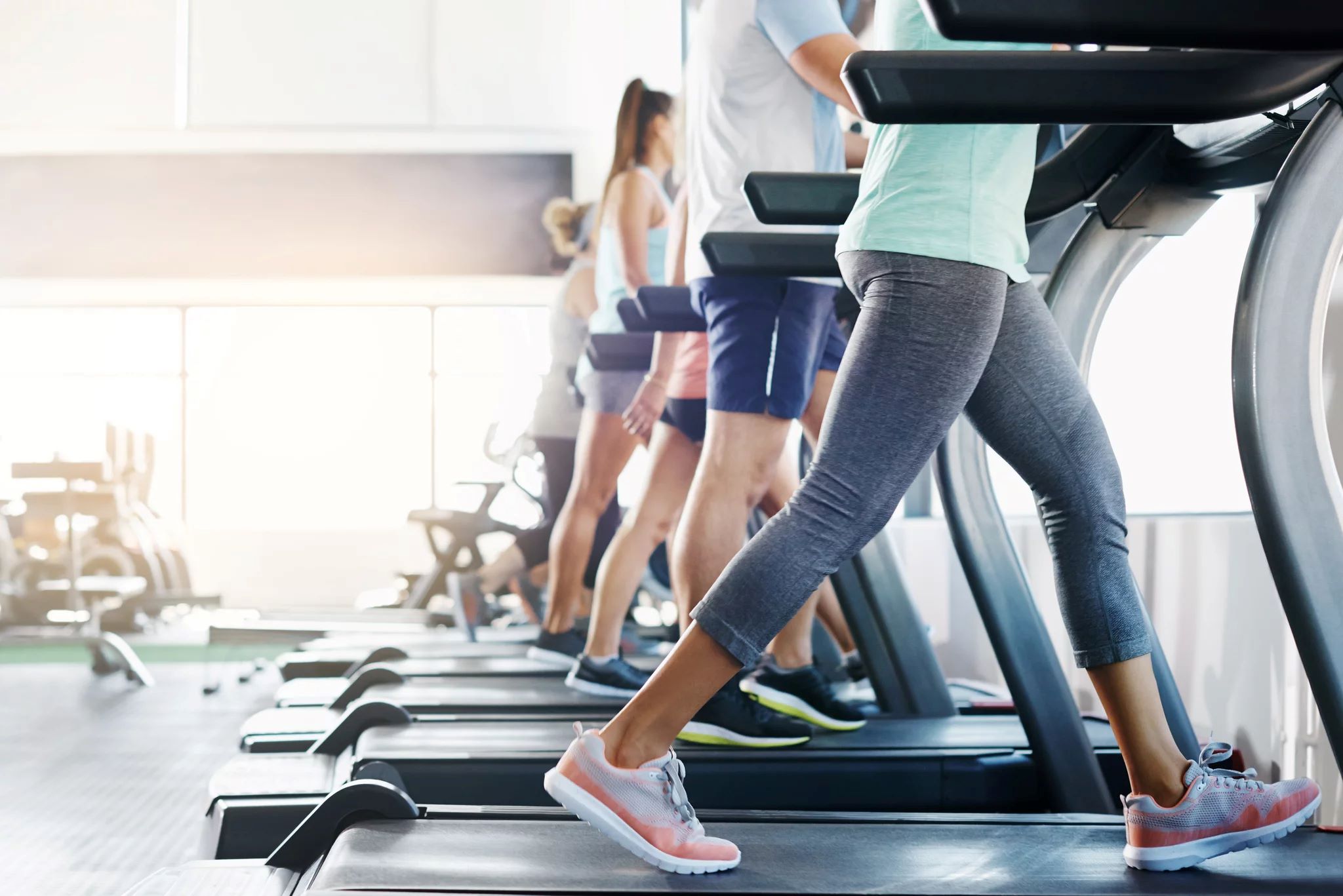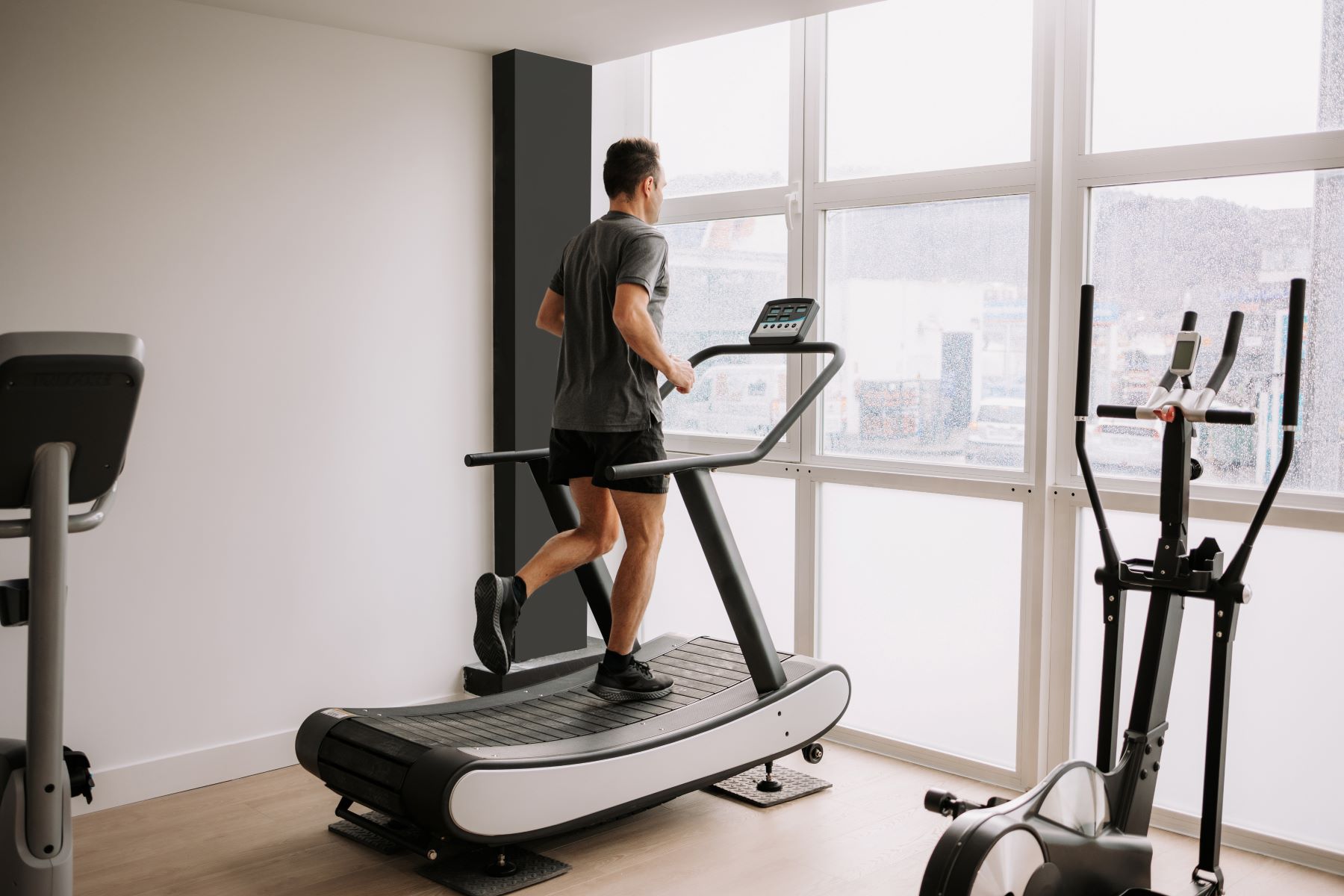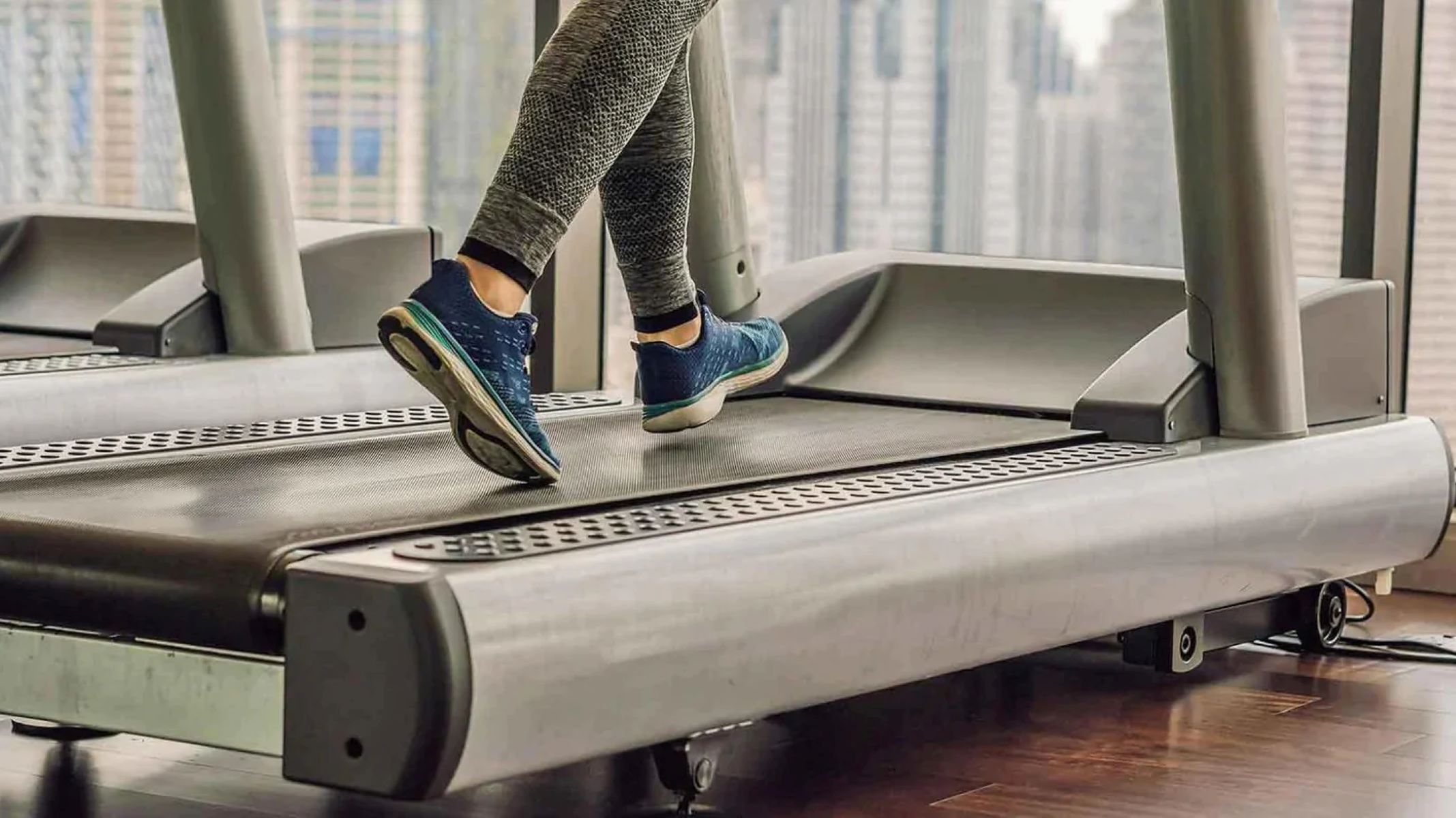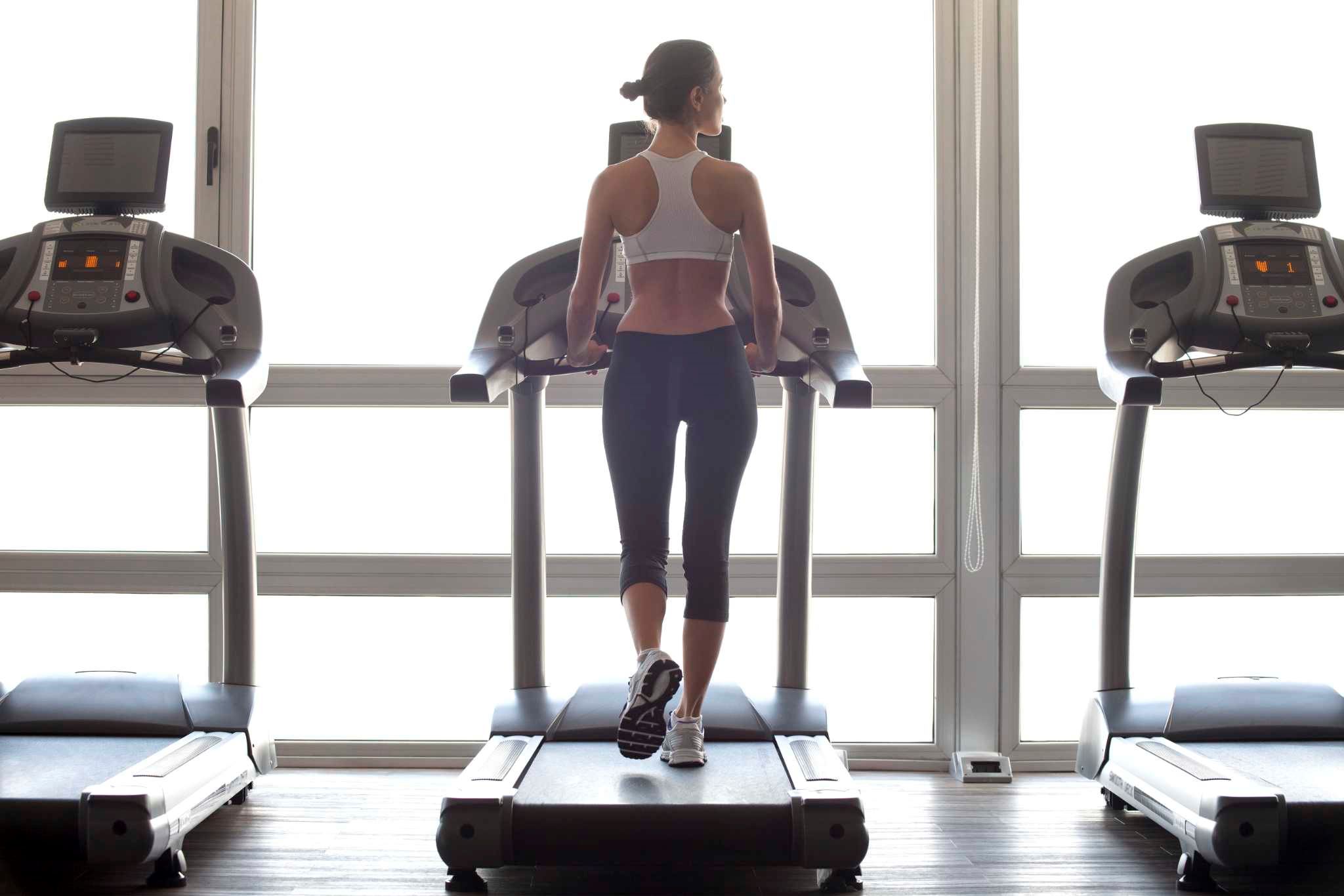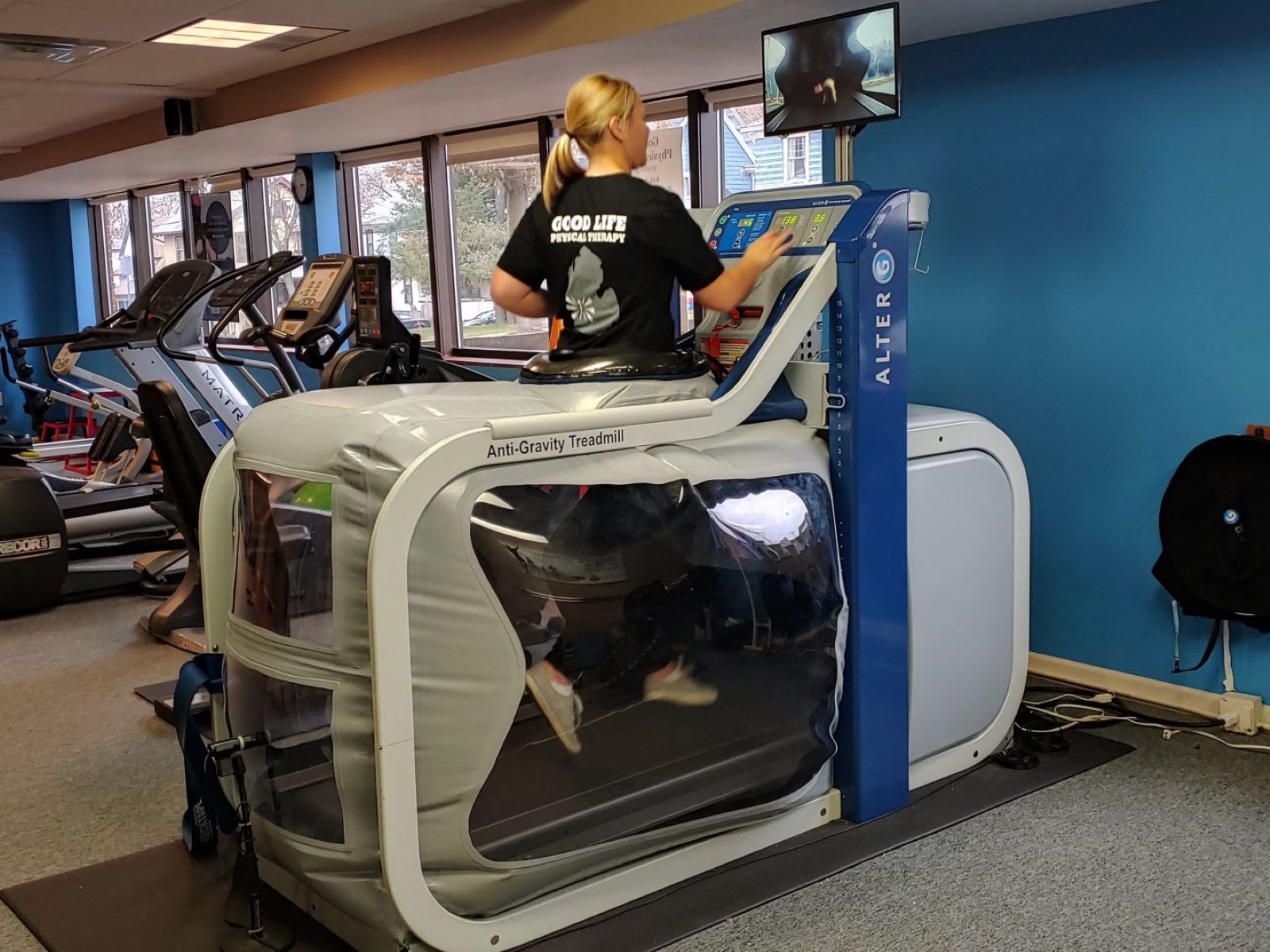

Featured
What Is An Anti-Gravity Treadmill
Modified: August 21, 2023
Discover the innovative features of an anti-gravity treadmill and how it can revolutionize your workouts. Try our featured anti-gravity treadmills for a gravity-defying fitness experience.
Introduction
Welcome to the fascinating world of anti-gravity treadmills! These cutting-edge fitness devices have revolutionized the way we exercise and rehabilitate, offering a unique and effective approach to training. If you’ve ever wondered what exactly an anti-gravity treadmill is and how it works, you’re in the right place. In this article, we’ll delve into the details of this innovative equipment and explore its benefits, uses, and potential limitations.
An anti-gravity treadmill is a specialized piece of fitness equipment that allows users to experience the sensation of running or walking in a reduced-gravity environment. It utilizes advanced technology to support and lift a portion of the user’s body weight, effectively reducing the impact and stress on the joints, muscles, and bones during exercise.
This state-of-the-art equipment was originally developed for NASA to help astronauts maintain their fitness during prolonged space missions. It is now widely used in various settings, including physical therapy clinics, sports medicine centers, and athletic training facilities, as well as by fitness enthusiasts looking for a low-impact workout.
By using an anti-gravity treadmill, individuals can experience the benefits of cardio and weight-bearing exercises without placing excessive strain on their bodies. This makes it an excellent tool for rehabilitation purposes, as it allows individuals recovering from injuries or surgeries to gradually regain strength, mobility, and endurance.
The technology behind anti-gravity treadmills is truly remarkable. It involves the use of a specialized chamber or harness system that creates a controlled environment for the user. By adjusting the air pressure or the tension on the harness, the device can simulate different levels of reduced gravity, ranging from 20% to as high as 80% of the user’s body weight.
So, whether you’re an athlete aiming to improve your performance, a patient recovering from an injury, or an individual looking for a safe and effective way to achieve your fitness goals, an anti-gravity treadmill could be just what you need. In the following sections, we will explore how these treadmills work, their benefits and uses, as well as any potential limitations and risks.
Definition and Explanation
An anti-gravity treadmill, also known as a Alter-G treadmill, is a specialized fitness machine that uses advanced technology to simulate a reduced-gravity environment for running or walking. This innovative equipment allows users to experience the benefits of exercise with significantly less impact on their joints and muscles compared to traditional treadmills.
The term “anti-gravity” may sound like something out of science fiction, but it refers to the concept of reducing the effects of gravity on the body. These treadmills achieve this by incorporating an air pressure system or a harness that lifts and supports a portion of the user’s body weight.
In simpler terms, an anti-gravity treadmill alters the user’s weight-bearing sensation, making them feel lighter while exercising. This reduction in impact can be particularly beneficial for individuals recovering from injuries or undergoing rehabilitation, as it minimizes stress on healing tissues and allows for a smoother and more controlled movement.
When using an anti-gravity treadmill, the user wears a pair of specially designed shorts or a harness that is attached to the machine. The system then applies a lifting force to counteract a percentage of the gravitational force, effectively reducing the user’s effective body weight. This percentage can be adjusted to simulate different levels of reduced gravity, depending on the individual’s needs and capabilities.
The technology behind anti-gravity treadmills is based on NASA-developed technology called Differential Air Pressure (DAP). The air pressure system creates an environment that reduces the forces applied to the body, allowing users to exercise with less joint compression and muscle fatigue.
It is important to note that while the term “anti-gravity” may imply complete weightlessness, individuals are still bearing some weight while using these treadmills. The goal is to reduce the weight-bearing load to a level that minimizes strain on the body, without completely eliminating the benefits of weight-bearing exercise.
Overall, anti-gravity treadmills provide a unique and effective solution for individuals seeking a lower-impact workout experience. Whether you’re recovering from an injury, dealing with joint pain, or simply looking for a way to reduce the strain on your body during exercise, an anti-gravity treadmill can be a valuable tool in your fitness journey.
How Does an Anti-Gravity Treadmill Work?
Anti-gravity treadmills employ advanced technology to reduce the impact of running or walking on the body. The key components of these treadmills include an air pressure system or a harness that works in tandem with the user’s body weight to create a reduced-gravity environment.
If the treadmill utilizes an air pressure system, the user wears a pair of specialized shorts that zip into a sealed chamber. Once the shorts are secured, the machine inflates the chamber with compressed air. As the air pressure increases, it creates an upward lifting force on the user’s lower body, reducing the effective body weight. This allows individuals to experience a lighter sensation while exercising.
On the other hand, if the treadmill relies on a harness system, the user wears a harness that is attached securely to the treadmill. The harness is adjustable, allowing users to control the amount of weight-bearing support they receive. By tightening the harness, the user can decrease the load on their lower body, simulating a reduced-gravity environment.
Both the air pressure and harness systems enable users to walk or run with less impact on their joints, providing a smoother and more comfortable workout experience. The ability to adjust the percentage of body weight support makes these treadmills versatile and suitable for users at different stages of fitness or rehabilitation.
In addition to reducing joint stress, anti-gravity treadmills offer other features to enhance the user’s experience. These may include cushioned tread belts to further minimize impact, adjustable speed and incline settings, as well as advanced monitoring capabilities to track performance and progress.
It’s important to mention that anti-gravity treadmills do not only benefit individuals recovering from injuries or surgeries. They are also used by athletes and fitness enthusiasts as a training tool to increase endurance, improve performance, and prevent injuries. By reducing the impact on the body, these treadmills allow users to push their limits without putting excessive strain on their joints and muscles.
Overall, the mechanics of an anti-gravity treadmill involve creating a controlled environment that reduces the effective body weight. This innovative approach to fitness and rehabilitation enables individuals to exercise with less impact on their joints, promoting a safer and more comfortable training experience.
Benefits and Uses
Anti-gravity treadmills offer a wide range of benefits and have diverse applications in various settings. Whether you are an athlete, a patient recovering from an injury, or simply looking for a low-impact workout, these treadmills can be a valuable addition to your fitness routine.
One of the primary benefits of using an anti-gravity treadmill is the reduction in impact on the joints, muscles, and bones. The ability to simulate a reduced-gravity environment allows individuals to engage in weight-bearing exercises with less strain on the body. This can be particularly advantageous for those recovering from injuries or surgeries, as it allows for a gentler and more controlled rehabilitation process.
The controlled environment of anti-gravity treadmills also enables individuals to gradually increase their weight-bearing load as they progress in their recovery or training. This gradual progression helps to promote healing, build strength, and improve joint mobility without overwhelming the body with excessive forces.
In addition to reducing joint stress, anti-gravity treadmills can also be an effective tool for improving cardiovascular fitness. By providing a comfortable and low-impact way to engage in aerobic exercise, these treadmills allow individuals to increase their heart rate and improve their endurance without the risk of overexertion or injury.
Furthermore, anti-gravity treadmills have been shown to enhance proprioception and balance. Proprioception is the body’s ability to perceive its position in space and coordinate movements. By promoting better body awareness and control, these treadmills can help individuals develop better balance and reduce the risk of falls.
These treadmills are widely used not only for rehabilitation but also for athletic training and performance enhancement. Athletes can incorporate anti-gravity training into their routines to reduce the risk of injuries, increase stamina, and improve running mechanics. The ability to adjust the percentage of body weight support allows athletes to target specific muscle groups or focus on specific aspects of their training.
Moreover, anti-gravity treadmills are suitable for a wide range of individuals, including those with medical conditions such as arthritis, osteoporosis, or obesity. The reduced impact and weight-bearing support provided by these treadmills make exercise more accessible and manageable for individuals with limited mobility or physical limitations.
In summary, the benefits and uses of anti-gravity treadmills are extensive. From aiding in rehabilitation and injury prevention to improving cardiovascular fitness and balance, these treadmills offer a versatile and effective workout option for people of all fitness levels and ages.
Potential Limitations and Risks
While anti-gravity treadmills offer numerous benefits, it is important to consider the potential limitations and risks associated with their use. Understanding these factors can help individuals make informed decisions about incorporating this equipment into their fitness routine or rehabilitation program.
One potential limitation of anti-gravity treadmills is their cost. These specialized machines can be quite expensive, making them less accessible for individuals on a tight budget. However, it is worth noting that some physical therapy clinics, fitness centers, and rehabilitation facilities may offer rental or pay-per-use options, making it more affordable for those who want to experience the benefits of these treadmills without the upfront investment.
Another consideration relates to the learning curve associated with using an anti-gravity treadmill. While the concept is relatively straightforward, individuals may need some time and practice to adjust to the sensation of weightlessness or reduced weight-bearing. Proper instruction and guidance from a trained professional are crucial to ensure proper technique and minimize the risk of injury.
It is also important to note that anti-gravity treadmills may not be suitable for everyone. Individuals with certain medical conditions, such as severe cardiovascular disease or respiratory problems, should consult with their healthcare provider before using this equipment. Additionally, individuals with significant balance issues or a history of falls may need additional assistance or modifications to safely use these treadmills.
Moreover, while anti-gravity treadmills are designed to reduce impact and stress on the body, it is still possible to overexert or strain muscles if proper caution is not exercised. Users should listen to their bodies, start slowly, and gradually increase the intensity and duration of their workouts. It is important to follow the recommended guidelines provided by the manufacturer or a healthcare professional to ensure safe and effective use of these treadmills.
Lastly, it is worth noting that anti-gravity treadmills, like any fitness equipment, should not be considered as a standalone solution for health and fitness goals. They are tools that can complement a well-rounded exercise program that includes strength training, flexibility work, and overall cardiovascular conditioning.
Overall, while anti-gravity treadmills offer unique benefits and applications, it is important to be aware of their potential limitations and risks. Consulting with a healthcare professional and receiving proper instruction and guidance can help individuals make the most of this specialized equipment while minimizing any potential drawbacks.
Popular Brands and Models
As the demand for anti-gravity treadmills has grown, several brands have emerged as leaders in the market, offering a wide range of models with varying features and capabilities. Here are some of the popular brands and models known for their quality and effectiveness:
1. AlterG: AlterG is one of the most well-known and respected brands in the anti-gravity treadmill industry. Their flagship model, the AlterG Anti-Gravity Treadmill, features a unique air pressure system that allows for precise customization of body weight support. It offers advanced monitoring capabilities and interactive features to enhance the user experience and track progress over time.
2. Woodway: Woodway, a leading manufacturer of high-end fitness equipment, also offers an anti-gravity treadmill called the Woodway Curve. This model utilizes a curved, non-motorized design to create a self-powered and low-impact running experience. The Woodway Curve allows users to control their speed solely through their own effort, making it an excellent option for individuals looking for a more natural running experience.
3. XOG: XOG is known for its innovative and versatile anti-gravity treadmills. Their models feature both air pressure and harness systems, offering users the flexibility to choose the method of support that best suits their needs. XOG treadmills are designed for both rehabilitation and athletic training purposes, providing a range of customizable features and advanced tracking capabilities.
4. HLT Technologies: HLT Technologies specializes in the development of advanced rehabilitation and therapeutic equipment, including anti-gravity treadmills. Their models incorporate state-of-the-art technology, such as virtual reality and biofeedback systems, to enhance the rehabilitation experience. HLT Technologies’ treadmills are designed to provide a holistic approach to rehabilitation, combining cardiovascular training with cognitive and functional exercises.
5. Biodex: Biodex is a reputable brand in the medical and sports science industry, known for its comprehensive range of equipment for rehabilitation and sports performance. Their anti-gravity treadmill, the Biodex FreeStep, offers unique features such as fall risk assessment, dynamic body weight support, and biofeedback training. This model is widely used in physical therapy clinics and rehabilitation centers for gait training and functional mobility improvement.
It’s important to note that while these brands are popular and respected, there are other manufacturers in the market that also offer reliable and effective anti-gravity treadmills. Consulting with a healthcare professional or fitness specialist can help narrow down the options and choose the best brand and model based on individual needs and goals.
Before purchasing or using an anti-gravity treadmill, it is advisable to thoroughly research the specifications, customer reviews, and warranty options provided by the manufacturer. This will help ensure that you select a treadmill that meets your specific requirements and offers the features and support necessary for your fitness or rehabilitation journey.
Conclusion
The emergence of anti-gravity treadmills has brought about a revolution in the fitness and rehabilitation industries. These innovative devices offer a unique and effective way to exercise with reduced impact on the body, making them accessible to a wide range of individuals, from athletes seeking performance enhancement to patients recovering from injuries or surgeries.
Throughout this article, we have explored the definition and explanation of anti-gravity treadmills, delved into their working mechanisms, and discussed their benefits and uses. We also highlighted potential limitations and risks associated with their use and provided an overview of popular brands and models available in the market.
Understanding the benefits and limitations of anti-gravity treadmills is essential for individuals considering incorporating them into their exercise routine or rehabilitation program. These treadmills offer a multitude of advantages, including reduced joint stress, improved cardiovascular fitness, enhanced proprioception and balance, and suitability for a wide range of individuals with different health conditions and fitness levels.
However, it is crucial to approach the use of anti-gravity treadmills with caution and under proper guidance. Consulting with a healthcare professional or fitness specialist can help determine whether these treadmills are appropriate for your specific needs and goals. Additionally, receiving proper instruction on technique and closely following recommended guidelines will ensure safe and effective use of the equipment.
As with any fitness equipment, anti-gravity treadmills should be seen as a complementary tool rather than a standalone solution. Incorporating a well-rounded exercise program that includes strength training, flexibility work, and overall cardiovascular conditioning will yield the best results in terms of overall health and fitness.
In conclusion, anti-gravity treadmills provide a breakthrough approach to exercising and rehabilitation, offering a low-impact and safe way to achieve fitness goals and recover from injuries. With the right guidance and proper usage, these treadmills have the potential to transform the way we train, helping individuals push their boundaries while protecting their bodies from excessive strain.

